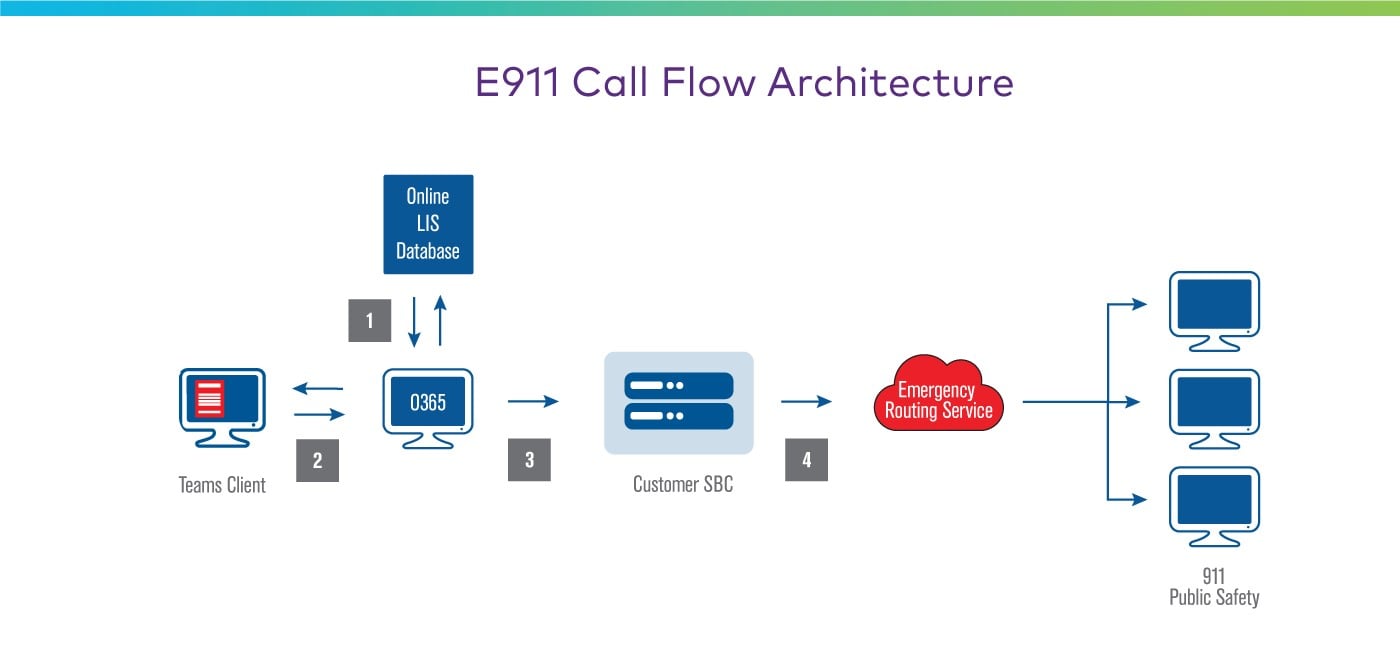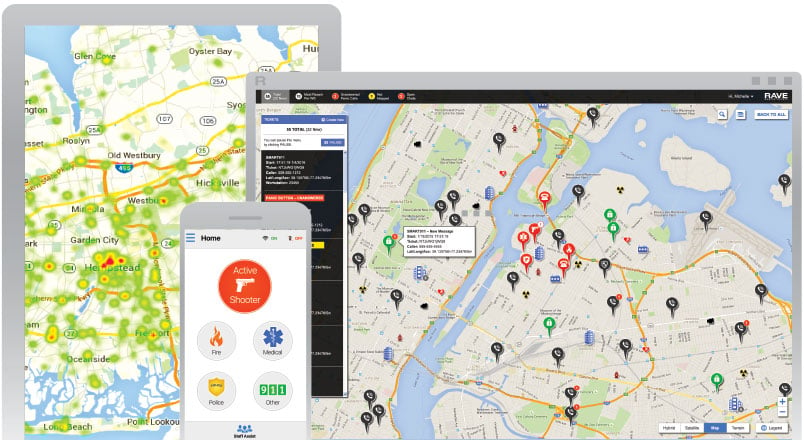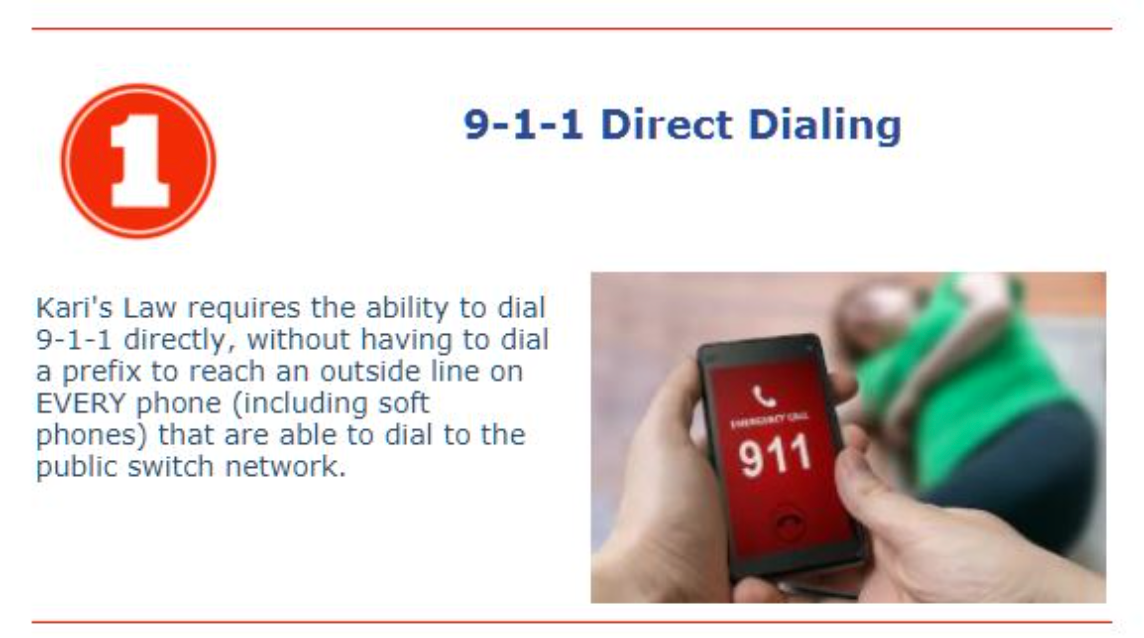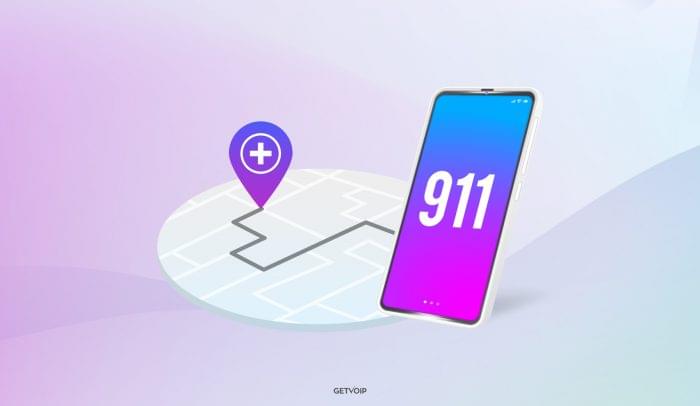The numbers "9-1-1" are vital to emergency calling in the United States, and Enhanced 911 improves the process further. This technology, also called E-911 or E911, takes information about the caller and sends it to the emergency dispatchers.
Business VoIP systems add convenience and opportunities for extended communications. E911 (which is called E112 in Europe) helps businesses and individuals using these receive the emergency services that they need, regardless of location.
In this article, we're going to break down everything you need to know about an E911 service. Here are the sections that will be covered in this article:
- What is E911?
- Why Your Business Needs E911
- Assign a Physical Address to Your Business
- Adds Protection for Your Employees
- E911 Keeps You Compliant
What is E911?

Source: Markets Insider
E911 is a vital part of the 911 calling system that displays the telephone number and location information of the caller on the emergency operator's screen. That way, if the caller is incapacitated and unable to share their location, help can still be provided. This isn't a replacement for the traditional 911 service, but more a way to enhance it.
Utilizing an IP network to make a phone call has a multitude of benefits. Among those is the ability to make a call from anywhere. That actually poises an issue for emergency situations, as your location is harder to pinpoint — that's where E911 comes in. You can assign location information to your number, even down to the floor or wing of your building.
An enhanced 911 call has a system in place called Automatic Number Identification, or ANI, and Automatic Location Identification, or ALI, which is sent to and displayed on the screens of operators. In addition, an emergency call with enhanced 911 will connect you to the nearest public-safety answering point (PSAP), through a process called selective routing.
Unfortunately, by default, IP networks doesn’t mesh well with traditional 911. This is because those phones aren’t location-based like traditional PSTN landline phones. Instead, ALI and ANI systems are required so that emergency personnel are local to the device’s location can respond.
But using E911 for your landline-based phone number could still prove to be an asset. If you’re using a gateway or ATA to connect traditional phones to an IP network, you'll need to register the address of any devices with the provider’s E911.
Traditional 911 and VoIP may not completely mesh together, but they're learning to live side-by-side now. Thanks to the New and Emerging Technologies 911 Improvement Act of 2008, VoIP service providers are granted access to existing 911 dispatch centers. Before this, traditional PSTN carriers were known to block or impede VoIP. But now it’s easier more than ever to use IP networks for emergency services.
Why Your Business Needs E911
If your business already uses an IP phone system, you need to implement an E911 service. While no one ever wants to find themselves in an emergency situation, this technology will help to keep you protected. E911 solutions are the best way to accurately locate someone calling 911 so it can be processed by the appropriate PSAP. That's something that your business should not be without.
Assign a Physical Address to Your Business

Source: Rave Mobile Safety
One of the most important benefits of E911 is that it offers the functionality that allows you to attach a precise physical address to your IP phone number. This is far more efficient than a distressed caller attempting to verbalize their location to the operator on the line. This technology allows you to pinpoint exactly where a person calling 911 is located.
This software works for an VoIP telephone system and a mobile phone as well. If someone were to call 911 from their mobile phone, E911 can use GPS tracking and cell towers to triangulate their location. This technology enhances that and can find a caller's location down to the floor they are on. Some E911 providers can even alert on-site emergency personnel that responders are needed.
This benefit is particularly important to companies that work in large office buildings or corporate campuses. The larger the building, the harder it would be for emergency responders to find one person.
Multiple companies tend to share office buildings. Some buildings even have multiple companies on the same floor. If someone in one of these office settings were to call 911, it could be a challenge to find them. Sometimes, a building address isn't enough. E911 software allows you to register a specific address, down to the office suite, with your phone number. That can make the difference between life and death in an emergency situation.
The method to set up an E911 address varies from provider to provider, but in most cases, it can be done through the system’s portal. These tools will ask for your primary address — that should be the location where the phone service is most commonly used. E911 is sometimes offered through business phone providers, such RingCentral. These tools typically won't even allow you to make an outbound call until you add an emergency address to your account.
Adds Protection for Your Employees
As reported by Flowroute, the number of people telecommuting in the US has increased 159 percent between 2005 and 2017. As this number continues to trend up and the coronavirus pandemic changes the face of the modern office, employers can expect the number of remote works to continue to increase. By 2028, 73 percent of all teams are expected to have remote employees.
On office time, companies are responsible for their employees' safety. The larger your company and the more spread out they are, the harder it will be to keep track of each individual. It's more challenging to remain responsible for your employees when they are not all working under the same roof, so an E911 service is an added level of protection for your employees.
If your remote employees have numbers on your organization's business phone, you can easily cover them with E911. While it will depend on your individual E911 provider, most vendors will allow you to add as many addresses as you need to your account.
That way, all your employees will have necessary protection. In fact, Jason Forehand of RedSky, a leading e911 vendor, recommended that companies offer E911 to all remote employees with hard office phones.
If one of your employees is half-way around the country and experiences and emergency, this technology will enable them to have the same level of protection that they would if they were working in the office. Some E911 providers like RedSky even allow you to add common locations to your profile.
It's not uncommon for remote employees to work somewhere different than their home office, such as a coffee shop or coworking space. That means that an emergency operator could easily find them. Not to mention, this software would keep managers in the loop as to if their employees had to dial 911.
E911 Keeps You Compliant

Source: VoDaVi Technologies
The Federal Communications Commission (FCC) has two legistlations designed to ensure that the constantly-evolving advanced communications tools that businesses use can still support end users' emergency response needs — Kari's Law and RAY BAUM's Act. When your business uses E911 technology, you're automatically compliant with both.
Kari's Law is named for a woman killed by her estranged husband. Her young daughter attempted to call 911 multiple times for help. The emergency call never went through, since the motel required all callers dial "9" to in order to call outside lines.
The law was enacted in 2018. It states that multi-line phone systems must allow for the direct dialing of 911 without having to press any additional numbers first. Kari's Law also requires businesses with these phone systems to implement notifications to designated first responders and law enforcement when an emergency call has been placed. Systems like E911 can allow to do this with ease, ensuring that your employees never miss out on assistance from emergency services in a dire situation.
RAY BAUM's Act was named in honor of a lawyer, but also stands for Repack Airwaves Yielding Better Access for Users of Modern Services. Section 506 of this act is aimed at improving the dispatchable location of a caller.
The FCC states that an address needs to include a street address, but should also get as granular as possible, including things such as floor or suite if possible. E911 falls in line with this, as one of the software's key purposes is to provide an address as specific as possible to emergency personnel.
Complying with both of these ordinances ensure your employees can easily reach emergency services if needed. They'll also help you to make sure emergency personnel are deployed accurately and rapidly. Since RAY BAUM'S Act and Kari's Law have been put into place by the FCC, following them will say your business hefty fines.
Conclusion: E911 Promotes Business Safety
E911 is a technology that continues to grow and evolve. Companies like Bandwidth are making important moves to ensure that businesses can stay safe and meet regulatory requirements.
IP phone systems offer an ever-growing list of benefits to its users. However, just like with every software solution, it comes with its challenges, particularly the fact that it is not location-sensitive. But if you implement E911, you can be sure that your employees will always be safe in an emergency situation.



